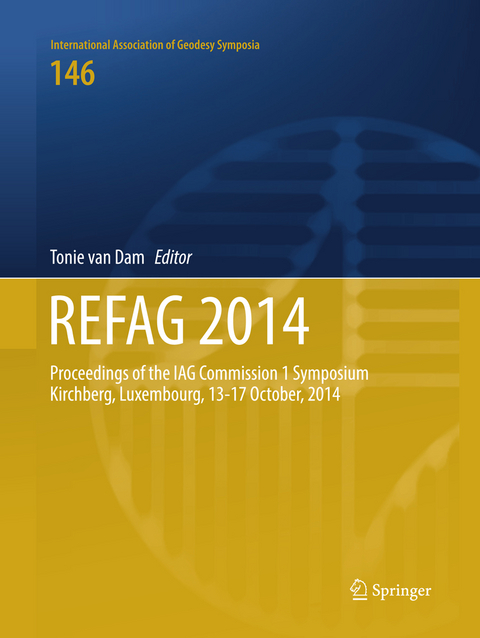
REFAG 2014
Springer International Publishing (Verlag)
978-3-319-83334-7 (ISBN)
Part 1 - Theory and Concepts.- The Helmert transformation approach in network densification revisited.- A study of the role of the choice of reference system in the analysis of GNSS coordinate time series.- Validation of components of local ties.- Part 2 - Geodetic Measurement Techniques.- Combination of space-geodetic techniques on the observation level with c5++ - common nuisance parameters, data weighting and computational challenges.- The Processing of Single Differenced GNSS Data with VLBI Software.- IVS contribution to ITRF2014.- Antenna axis offsets and their impact on VLBI derived reference frames.- Scheduling VLBI observations to satellites with VieVS.- Refined Tropospheric Delay Models for CONT11.- Loading-induced deformation due to atmosphere, ocean and hydrology: Model comparisons and the impact on global SLR, VLBI and GNSS solutions.- The International Mass Loading Service.- Pre-combined GNSS-SLR Solutions: What could be the benefit for the ITRF?.- GGOS-SIM - Simulation of the Reference Frame for the Global Geodetic Observing System.- Overview of the ILRS contribution to the development of ITRF2013.- Part 3 - Regional Reference Frames.- A Spatial Analysis of Global Navigation Satellite Systems Stations within the context of the African Geodetic Reference Frame.- The development of a station coordinate prediction program to model time series from Continuous GPS stations in New Zealand.- Results from the regional AUSTRAL VLBI sessions for southern hemisphere reference frames.- Implementation of the ETRS89 in Europe: Current Status and Challenges.- Defining a Local Reference Frame using a Plate Motion Model and Deformation Model.- A Development of the Russian Geodetic Reference Network.- Weighted vs. unweighted MCs for the datum definition in regional networks.- Is Nubia plate rigid? A geodetic study of the relative motion of different cratonic areas within Africa.- Part 4 - Celestial to Terrestrial Frame Transformations.- How consistent are the current conventional celestial and terrestrial reference frames and the conventional Earth orientation parameters?.- Using quasar physics to improve the VLBI reference frame.- Towards Improved Lunar Reference Frames: LRO Orbit Determination.- Part 5 - Usage and applications of reference frames in Geosciences.- Terrestrial reference frame requirements for studies of geodynamics and climate change.- Advantage of the North America Land Data Assimilation System Phase 2 (NLDAS-2) products in modeling continental water storage driven surface displacement for the continuous Plate Boundary Observatory GPS stations.- Non-parametric estimation of seasonal variations in GPS-derived time series.- Spatial Truncation Errors in Continental Water Storage Variations Induced Displacements for Regional Study.- Part 6 - Georeferencing in Practice.- A Two-Frame National Geospatial Reference System Accounting for Geodynamics.
| Erscheinungsdatum | 04.08.2018 |
|---|---|
| Reihe/Serie | International Association of Geodesy Symposia |
| Zusatzinfo | XI, 246 p. 6 illus. |
| Verlagsort | Cham |
| Sprache | englisch |
| Maße | 210 x 279 mm |
| Gewicht | 672 g |
| Themenwelt | Naturwissenschaften ► Geowissenschaften ► Geologie |
| Naturwissenschaften ► Geowissenschaften ► Geophysik | |
| Schlagworte | Geodesy • Geodynamics • geosciences • Plate Motion Model • Terrestrial Reference Frame |
| ISBN-10 | 3-319-83334-0 / 3319833340 |
| ISBN-13 | 978-3-319-83334-7 / 9783319833347 |
| Zustand | Neuware |
| Haben Sie eine Frage zum Produkt? |
aus dem Bereich


